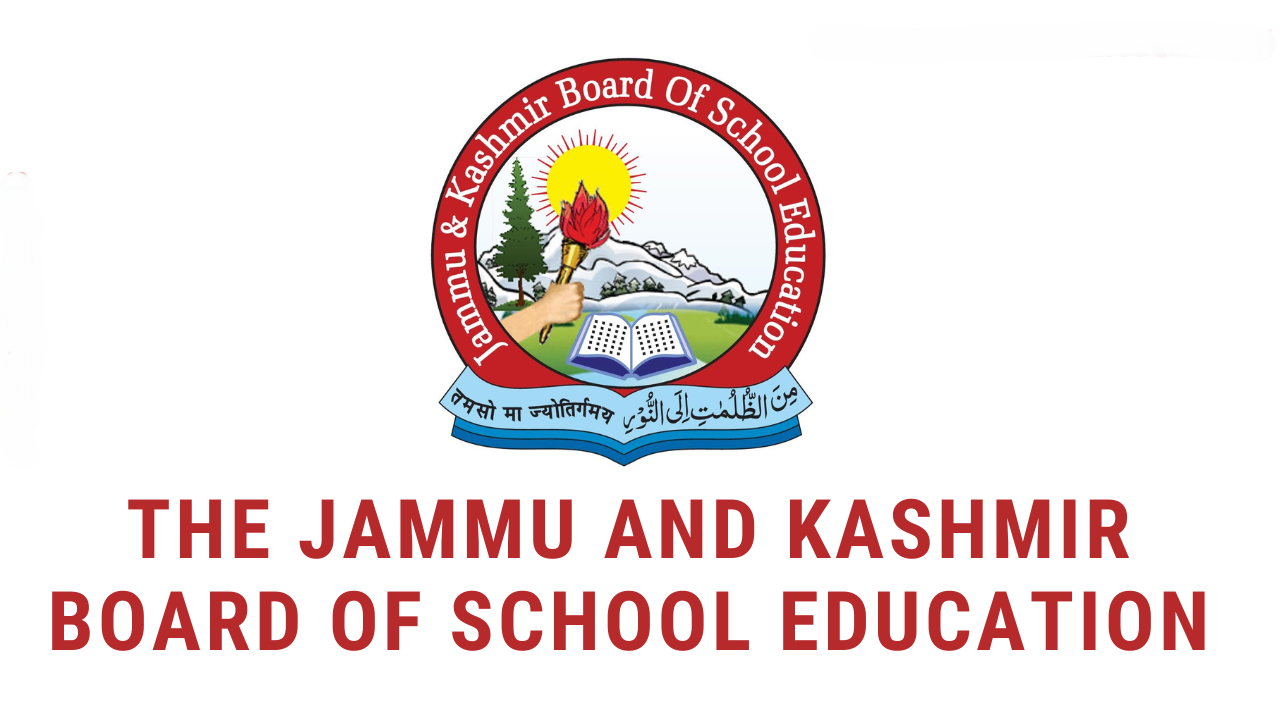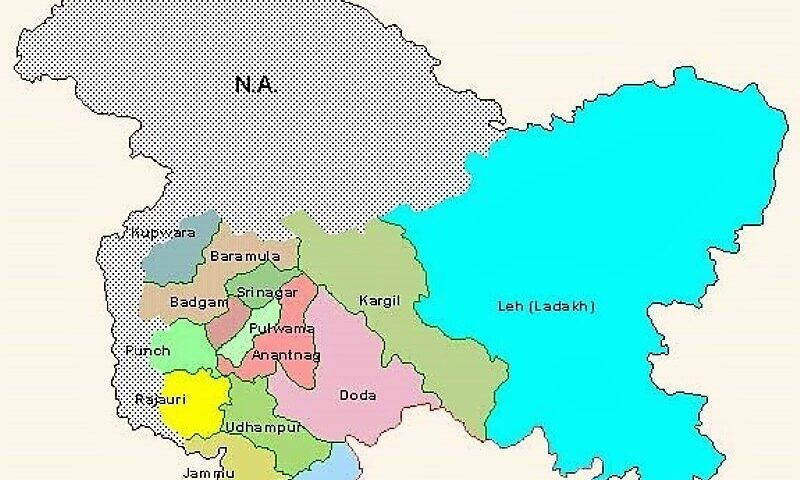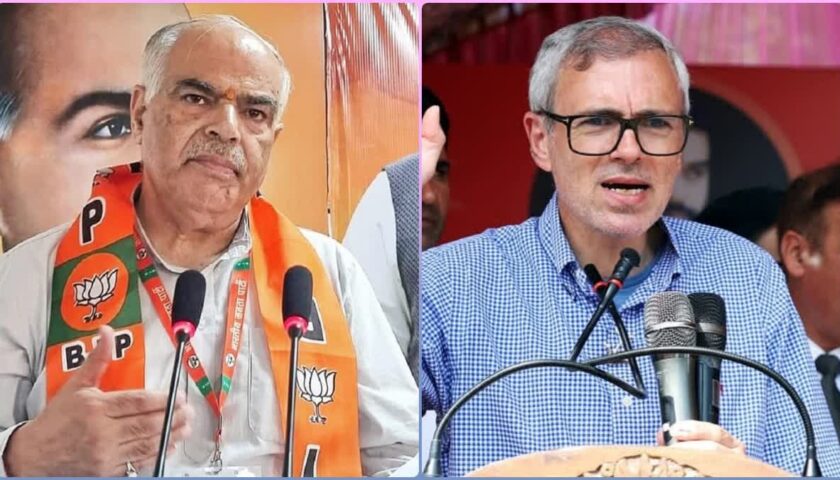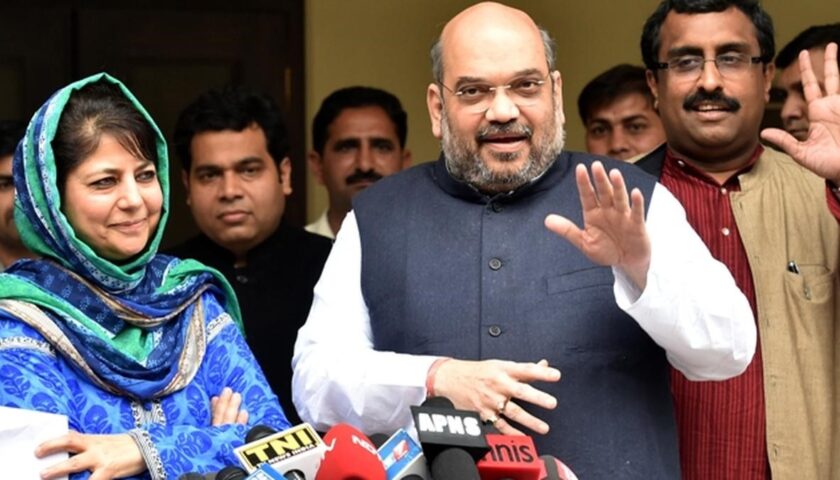Kashmiri Language Set to Enter 9th & 10th Class Curriculum in J&K
By: Javid Amin | Srinagar | 27 July 2025
A Long-Awaited Academic Breakthrough in Jammu & Kashmir
In a move set to rekindle cultural pride and linguistic identity, the Directorate of School Education Kashmir (DSEK) has announced that Kashmiri language will soon be formally included in the curriculum for 9th and 10th-grade students across the region. The announcement, made by Dr. G.N. Yattoo, Director of School Education, signifies not just an educational development, but a symbolic leap toward cultural revival and mother tongue empowerment in Jammu and Kashmir.
This step is closely aligned with the National Education Policy (NEP) 2020, which emphasizes the promotion and preservation of regional and indigenous languages. The inclusion of Kashmiri in higher secondary classes, long demanded by educators, linguists, and cultural activists, aims to reverse years of marginalization faced by the language in formal education settings.
As the proposal nears final legal vetting and policy approval, Kashmiri language is set to become more than just a medium of nostalgia—it will now become a formal tool for academic and personal empowerment.
Background: The Journey of Kashmiri Language in Education
The journey of the Kashmiri language in J&K’s educational framework has been tumultuous. For decades, it remained confined to the early primary stages of education (mostly up to 5th grade), with no continued academic pathway beyond middle school.
Despite being the mother tongue for over 55% of the region’s population, Kashmiri has often been neglected in favor of Urdu and English, which dominate the higher rungs of both public and private education in the Union Territory. As a result, many students abandon the language academically at a young age, leading to a disconnect between cultural identity and modern aspirations.
The lack of advanced-level Kashmiri instruction meant:
-
Students had no opportunity to master their mother tongue academically
-
The language was not viable for competitive exams like UPSC, JKPSC, or university-level study
-
Kashmiri literary traditions remained inaccessible to new generations
-
A slow, dangerous trend of linguistic erosion and cultural amnesia set in
Now, with the new policy push, this marginalization is poised to end.
What’s Driving the Change? The NEP’s Role in Language Revival
The National Education Policy 2020, a landmark education reform strategy introduced by the Government of India, stresses the promotion of regional languages and mother tongues. It lays out that wherever possible, the medium of instruction till at least Grade 5—and preferably till Grade 8—should be the home or local language.
For multilingual states like Jammu & Kashmir, this means empowering native languages like Kashmiri, Dogri, Balti, and Gojri through curriculum inclusion and academic recognition.
The decision to add Kashmiri to secondary classes stems from:
-
NEP Compliance: Strengthening regional languages in education systems
-
Cultural Identity Preservation: Reconnecting youth with their linguistic heritage
-
Pedagogical Benefits: Studies show students grasp complex ideas faster when taught in their first language
-
Competitive Edge: Enabling Kashmiri as a subject option in state and national-level exams
The change will also be discussed and finalized at the upcoming NEP national conference on August 19, where implementation strategies and timelines will be confirmed.
Key Educational Benefits of Adding Kashmiri in 9th and 10th Classes
This move is far more than symbolic. Introducing Kashmiri language in senior classes will have tangible educational, cognitive, and cultural benefits for thousands of students across the Valley.
1. Strengthening Linguistic Continuity
Currently, students are introduced to Kashmiri in lower grades but drop it by middle school due to lack of continuation. Adding it to the secondary school curriculum ensures vertical academic continuity and a structured learning progression.
2. Enhancing Cultural Identity
Students learning Kashmiri at higher levels will:
-
Connect more deeply with their folklore, oral traditions, and literature
-
Develop cultural confidence and a stronger sense of identity
-
Become custodians of their heritage in an increasingly globalized world
3. Academic and Competitive Edge
Including Kashmiri as an elective or optional subject can:
-
Increase subject choice flexibility
-
Help students target language-based competitive exams, such as UPSC (Civil Services), JKPSC, or Central University entrance exams, where native languages are valid paper options
4. Boosting Creative Thinking
Courses in Kashmiri literature and creative writing will develop:
-
Imagination and expression in native idioms
-
Critical thinking through analysis of local themes
-
Language appreciation, especially among first-generation learners
Curriculum Structure: What Will Students Learn?
Once the curriculum is legally vetted and rolled out across Kashmir’s secondary schools, students in Classes 9 and 10 can expect a well-balanced syllabus, modeled along JKBOSE (Jammu and Kashmir Board of School Education) and CBSE standards.
Tentative Syllabus Components:
-
Grammar and Vocabulary: Sentence structure, proverbs, idioms, parts of speech, and syntax
-
Literature: Classical and modern Kashmiri poetry and prose—works of Mahjoor, Rehman Rahi, Nadim, etc.
-
Creative Writing: Essays, letters, story-writing, and poetic compositions
-
Oral Proficiency: Debates, storytelling, recitation, pronunciation practice, and dialogue writing
-
Cultural Context: Themes covering festivals, folklore, Sufism, and Kashmir’s literary history
A holistic focus will ensure the language is not just taught, but truly lived.
Teacher Training and Capacity Building
Introducing a language curriculum at the secondary level involves more than writing a syllabus—it requires investing in human resources, particularly trained language teachers.
Current Challenges:
-
Shortage of subject experts, especially at the 9th and 10th grade level
-
Lack of training modules for modern Kashmiri language pedagogy
-
Digital tools for Kashmiri learning are still underdeveloped
Proposed Solutions:
-
The Directorate is likely to launch teacher training workshops post-August to:
-
Equip current staff with updated linguistic teaching methods
-
Recruit subject specialists from the University of Kashmir and other academic institutions
-
-
Development of audio-visual content, textbooks, and grammar guides
-
Collaboration with local Kashmiri writers and poets to enrich classroom experience
Reactions from the Ground: What Stakeholders Are Saying
Educators
“Teaching Kashmiri in secondary school is long overdue. It helps create students who are not just academically capable but emotionally connected to their roots,” said Prof. Shafiq Ahmad, linguist and former dean at Kashmir University.
Students
“This means I can finally choose Kashmiri as an optional subject for my PSC exams,” says Areeba Wani, a 10th-grade student from Anantnag. “My grandmother used to recite poems in Kashmiri, and now I can learn to write my own.”
Parents
“It gives me great joy that my children will learn the language I grew up speaking. It’s a bridge between generations,” said Bashir Lone, a parent from Baramulla.
Implementation Timeline: What’s Next?
According to DSEK, the final approval stage is underway. After the NEP National Conference on August 19, a detailed notification is expected outlining:
-
Exact implementation date (likely starting from the 2025–2026 academic session)
-
Schools and districts covered in phase one
-
Syllabus outline and learning outcomes
-
Textbook and training material release schedule
The curriculum will be implemented in government and aided private schools initially, with possible expansion to CBSE-affiliated schools that follow the JKBOSE dual-track model.
Broader Impact: A Model for Other Regional Languages
The inclusion of Kashmiri at the secondary level may become a blueprint for other neglected mother tongues in India. If successful, it could inspire:
-
Dogri inclusion in Jammu schools
-
Gojri and Pahari revival efforts
-
Balti curriculum development in Ladakh
-
Linguistic preservation efforts in northeastern states like Arunachal and Manipur
India is a linguistically diverse country facing rising pressures from globalization. Including native languages in modern education is one of the few sustainable ways to preserve these rich traditions.
Challenges Ahead: What Could Derail the Plan?
Despite its promise, the proposal is not without hurdles.
Key Challenges:
-
Political Interference: Changes in government or policy priorities could delay or alter implementation
-
Logistical Constraints: Teacher shortage, textbook printing, and training could slow rollout
-
Urban Resistance: Elite private schools may resist adopting “vernacular” subjects, viewing them as academically non-competitive
-
Parental Misconceptions: Many parents still equate English with success and view regional languages as unnecessary
Combating these challenges requires a sustained public awareness campaign, policy consistency, and inclusion of Kashmiri in the digital learning ecosystem.
Bottom-Line: A New Dawn for Kashmiri Language and Identity
The formal introduction of Kashmiri language into secondary school curriculum is more than an academic reform. It’s a cultural renaissance, a political affirmation, and an emotional reconnection for an entire generation.
In a region often defined by its political struggles, this move offers a chance to focus on preserving the soul of Kashmir—its language, poetry, and people.
It is now up to educators, administrators, parents, and students to embrace this opportunity and build a future where language is not a barrier but a bridge to identity, confidence, and knowledge.




